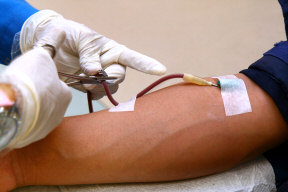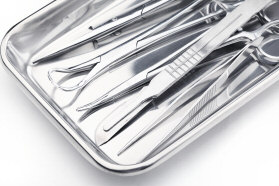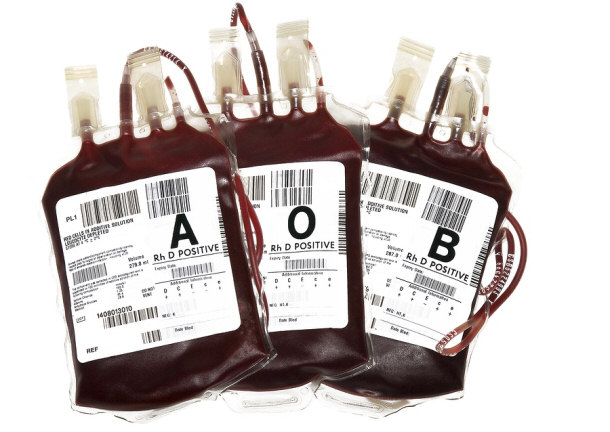Bloodless Surgery – An Effective Alternative to Blood Transfusion
 Blood transfusions have saved a lot of people in the past. However, the new era
has introduced the world with an alternative – the bloodless surgery. The idea
of bloodless surgery started when a religious organization, called Jehovah’s
Witnesses, insisted that they would not accept blood transfusion. Since 1960,
medical staffs have respected the stand of Witnesses regarding blood transfusion
and therefore started building bloodless surgery centers to areas where there is
a big population of Witnesses who needed surgery without the use of blood.
Because this alternative has proved to be more beneficial to health comparing to
blood transfusions, other patients who are not Jehovah’s Witnesses started
requesting for surgery without blood. Slowly, this procedure became popular in a
lot of areas around the world. Blood transfusions have saved a lot of people in the past. However, the new era
has introduced the world with an alternative – the bloodless surgery. The idea
of bloodless surgery started when a religious organization, called Jehovah’s
Witnesses, insisted that they would not accept blood transfusion. Since 1960,
medical staffs have respected the stand of Witnesses regarding blood transfusion
and therefore started building bloodless surgery centers to areas where there is
a big population of Witnesses who needed surgery without the use of blood.
Because this alternative has proved to be more beneficial to health comparing to
blood transfusions, other patients who are not Jehovah’s Witnesses started
requesting for surgery without blood. Slowly, this procedure became popular in a
lot of areas around the world.
What are the risks of blood transfusion?
For most people, blood transfusion is a life-saver. However, this process has
risks that can even threaten an individual’s life. Although modern technology
has enabled hospitals to check and screen blood samples a lot of times before
injecting it to a patient, there is always a risk of having infections. Today,
transfusion reactions are the common negative effects of blood transfusion to
patients. Transfusion reactions include allergic reaction, febrile reaction,
transfusion-related acute lung injury (TRALI), acute immune hemolytic reaction,
delayed hemolytic reaction, as well as graft-versus-host disease.
What are the advantages of bloodless surgery?
 A lot of people not only request for bloodless surgery due to religious reasons.
This surgical procedure has attracted both medical staffs and patients and made
most of them skeptical about it. However, there is a lot of good feedback
regarding this procedure. Below are the advantages of bloodless surgery. A lot of people not only request for bloodless surgery due to religious reasons.
This surgical procedure has attracted both medical staffs and patients and made
most of them skeptical about it. However, there is a lot of good feedback
regarding this procedure. Below are the advantages of bloodless surgery.
- Safety - As mentioned earlier, there are a lot of risks brought by blood
transfusion. Aside from contracting blood borne diseases such as Hepatitis
and AIDS, blood transfusion is also prone to reactions due to human errors
that cause mistransfusion – transfusing incompatible blood type. There is
also shortage of blood supply in some countries. Some blood types are
sometimes not readily available and the demand for blood is continuously
increasing.
- Economy-friendly - Some patients do not realize that the cost of blood
transfusion can be up to $500 each. Although blood is free, it needs to be
packaged, stored and transported. This process can cost up to $1,000 for
just one patient. After the blood transfusion, the patient still needs to
pay a separate fee to treat the complications that may occur as well as the
additional days he or she needs to stay in the hospital. As a result,
patients who do not have money to pay for an expensive blood transfusion are
being sent to bloodless surgery centers.
- Faster Recovery - Patients who have bloodless surgery recover faster and
leave the hospital earlier compared to patients who had blood transfusion.
Aside from that, the risks and complications of bloodless surgery are lower
than surgeries that use blood.
The Process of Bloodless Surgery
- First, the patient needs to undergo evaluation for the doctors to check
if he or she has experienced clotting problems or unexpected bleeding after
undergoing medical procedures in the past.
- The patient’s hemoglobin level will be checked. If the patient’s
hemoglobin is too low to undergo the bloodless surgery, he or she will be
given medications.

Doctors also reduce the number of blood tests administered to the patient.
When the doctors decide that the patient is ready for bloodless surgery, he or
she may undergo to different stages of surgery. These stages require that the
patient would be injected with general anesthesia. Below are the other methods
for patients who choose elective bloodless surgery.
- Hypotension - This procedure is done by altering the patient’s arterial
pressure. The doctors would lower the blood pressure to reduce blood loss
during the surgery. This procedure is only available for patients who do not
have coronary artery disease. Also, surgeries that need tissue grafting
cannot use this method.
- Hemodilution - This method requires that a big percentage of the
patient’s blood be withdrawn from the body. The patient’s own blood
would be stored temporarily. Colloid or crystalloid solutions will be used
as replacement for the volume of blood withdrawn from the patient’s body.
The patient will therefore have lesser red blood cells to lose without using
other people’s blood. After the operation, the patient’s blood will be reinfused.
- Blood Salvage - Also known as autotransfusion, blood salvage uses an
automated recovery system during the surgery. This technology collects the
patient’s blood and transfers it to a cell separation device. This device
works by sorting the different components of blood and then cleaning them.
The blood components are then concentrated before reinfusing them to the
patient. This method can be used to patients without active infections and
malignant tumors.
Surgical Instruments and Techniques Used for Bloodless
Surgery
 During the surgery, surgeons monitor the patient’s body temperature to keep
it from dropping below normal. Studies have shown that patients who have lower
body temperature lose more blood. The anesthesiologist will also administer a hypotensive anesthesia. This type of anesthesia will lower and maintain the
blood pressure of the patient. For bloodless surgery to be successful, doctors
use some specialized instruments to avoid too much bleeding. During the surgery, surgeons monitor the patient’s body temperature to keep
it from dropping below normal. Studies have shown that patients who have lower
body temperature lose more blood. The anesthesiologist will also administer a hypotensive anesthesia. This type of anesthesia will lower and maintain the
blood pressure of the patient. For bloodless surgery to be successful, doctors
use some specialized instruments to avoid too much bleeding.
- Pulse Oximeter - During surgery, the patient’s blood oxygen levels will
be monitored using this instrument. This device does not require the doctors
to draw blood from the patient for testing. It is simply clipped on the
patient’s finger or toe to estimate the amount of oxygen carried by the
hemoglobin.
- Volume Expanders - This blood substitute (non-blood fluid) is
used by doctors to enhance blood circulation.
- Harmonic Scalpel - This innovative scalpel is used to lessen the amount
of bleeding. The doctors would use it to cut through the patient and seal
the vessels at the same time to avoid further bleeding.
- Laser - This is an alternative instrument to scalpels. Laser surgery uses
light to cut off the patient’s tissues and cauterize the blood vessels at
the same time.
- Cell Saver - This device is used to perform autotransfusion or blood
salvage.

Today, after five decades after starting to study this alternative, more
physicians have realized that blood transfusion has more unnecessary risks than
bloodless surgery. Because an increasing number of people around the world is
requesting for this procedure both for safety and religious reasons, medical
industries are practicing more effective techniques to bloodless surgery
especially for complicated procedures such as bloodless lung transplant. Some
doctors still cannot understand and accept this “unconventional” method and
would not agree to let a patient undergo a dangerous procedure. Still, some
doctors are arguing that the surgery would be easier if the patient would only
agree to have blood transfusion.
Medicine & Treatments
Top Lists:
Top 15 Hangover Cures That Actually Work
Top 15 Unusual Ways To Treat Diseases
Informational:
Computerized Physician Order Entry and ePrescribing
Health Data and Importance of Digitization
Nursing Information Systems – Vendor Market Analysis
Telehealth - Healthcare Informatic's Golden Egg
EHR, EMR, PHR – The Digital Future of Health Data
Bloodless Surgery – An Effective Alternative to Blood Transfusion
Medicines That Have Changed the World
The Process of Female Egg Donation
How Chemotherapy Treats Cancer
Thighplasty: Is a Leg Lift Procedure Right for You?
Treating Acne with Laser Therapy: Can it Benefit You?
Using Tanning Beds to Treat Vitamin D Deficiency
Choosing Birth Control
Social History of Patent Medicines
Biology
An Introduction to the Cells of Organisms
Cardiovascular System and Energy Systems |